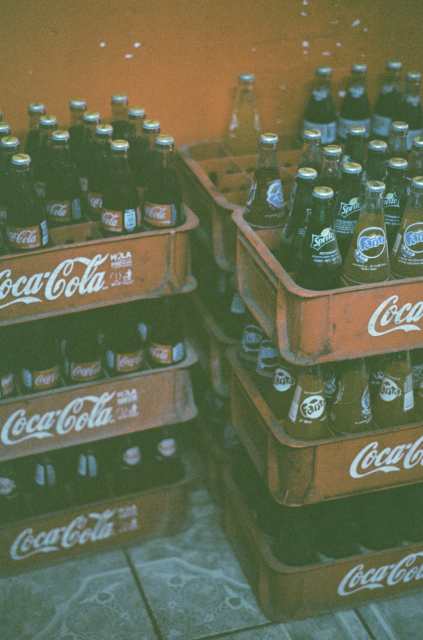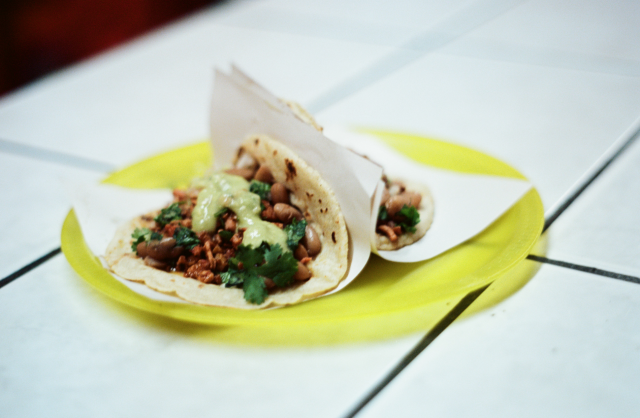Much of Baja’s terrain is something out of a live-action Flintstones movie. Bedrock litters the desert floor as if a once great mountain had succumbed to even greater pressures and combusted. Boulders comparable to Winnebagos scatter heavily on the ground with no trace of origin. Varieties of cacti and succulents bring life to the otherwise desolate landscape. Rare pops of color and soft white petals expose themselves to a keen eye. The sand is teeming with reasonably small to alarmingly large rattlesnake excrement. Cattle and horse roam wild, mainly in packs, thin from the wear that is expected from surviving in a desert. It’s beautiful. It’s dangerous. It’s a glimpse into Earth’s prehistoric past. Mostly untouched since its birth, Baja’s geographical details rival the set of “Road Warrior.” And, this was proven even more apparent when we entered San Quintin (pronounced “San Keen-Teen”), a small town some two hours south of Ensenada.
The town itself is a dusty, impoverished truck-stop – split down the middle by the biggest of very few paved roads – a salvation for weary travelers and truck drivers to safely drift into Dreamland. I imagine a once bustling road-side “pit stop” deteriorated by some hypothetical apocalypse. My imagination ran wild. Where we’d actually found ourselves, however, was a humble community of agricultural homesteads whose businesses made the most of the tourism brought to them by the Baja 1000. Gravel and silt roads etch the landscape and give way to hidden hospitals and mini-malls. What San Quintin hides from the less adventurous are long, challenging dirt roads exposing gorgeous green hills – and I’m pretty sure a volcano – that lead to kitschy waterfront restaurants and small fishing villages.
It was here in San Quintin that we discovered tacos. Real, Mexican, no nonsense, belly-up-to-the-bar, tortillas made on-the-spot, radishes in (questionable) water, forget the small-talk, tacos. And goddamn they were good! With our fingers crossed and a bathroom nearby, we indulged. Three, er, make that four tacos each. We encountered our first proper taco stand during an evening stroll past a largely abandoned strip of businesses that parallel Mexico’s Highway 1. It was a walk-up joint run by two chefs: one cooked Asada, the other cooked Adobada. They worked together, but whether or not it was an amicable relationship is unbeknownst to us. And, frankly, it didn’t matter. The tacos were great. No, the tacos were amazing! The service was, well, it was service. Nevertheless, as soon as we thought we’d found the best tacos in Baja, we stumbled into Tacos Jaliscos… across the street.







